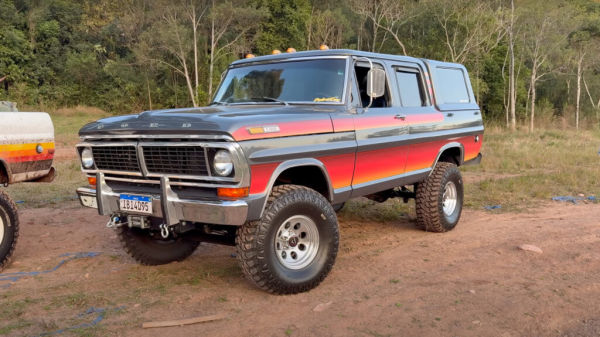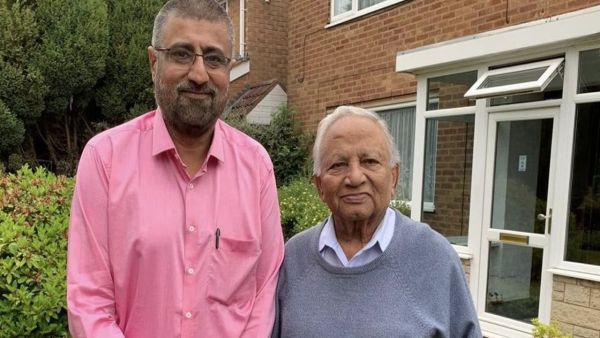While America saw the fifth-generation Ford F-Series trucks fade out by 1972, the same can’t be said in other parts of the world, like Brazil. There, the F-1000 arrived in 1979, and continued to thrive for nearly two more decades.
This Brazil-exclusive F-1000 was based on the fifth-gen F-Series body used in the U.S. from 1967 to 1972. From there, it gradually evolved into something uniquely its own. Rather than receiving entirely new platforms every few years, like we see here in the States, the Brazilian F-1000 stretched its production cycle across decades. In doing so, it incorporated cosmetic and functional updates without altering any of its basic foundation.
At the start, the F-1000 was nothing more than a stripped-down, rear-wheel-drive work truck. It was offered only in a regular cab configuration, and it had a bed that appeared to be molded into the body itself. However, the lineup of powertrains was actually pretty diverse for a utility truck, with options such as a 272-cubic inch V8, a 3.4-liter inline-six, and smaller four-cylinder engines.
Ford even offered different configurations that ran on gasoline or ethanol. Diesel and turbodiesel variants arrived in the early 1990s, offering a modest 119 horsepower. Certainly not one of the most powerful Ford trucks, but alas.
What made the Ford F-1000 so unique?
While the F-1000 base models served as durable, no-nonsense utility vehicles, the aftermarket allowed the F-1000 to truly came alive. Brazilian coachbuilder Sulamericana played a big part in this: They received brand new trucks under warranty, and modified them into amazingly bizarre SUV-truck-sedan hybrids. It’s a big part of what makes them one of the coolest foreign Fords around.
Sulamericana rolled out a ton of F-1000-based variants with names like the GB Monaco, Mirage, Caravelle, Guerrero, and even Airplane and Buffalo. The GB Fly was a two-door F-1000 sports coupe that was as tall as it was long. The GB Special Fly looked like a regular pickup in the front, a minivan in the middle, and had a pickup bed at the rear. The GB Monaco looked like a stretched executive sedan on a truck frame. The Caravelle featured twin stacked taillights that doubled down on a classic Ford look. Collectively, it was like a child’s drawings come to life.
What automakers can learn from the Ford F-1000
It’s a real example of different strokes for different folks. What never would have taken off in the United States was a massive success just south of us. After all, the fifth-generation F-Series often ranks on the lower end. Looking like a Franken-car stitched together by a manufacturer with a big imagination, these so-so trucks were perfect for a market that needed something durable over something designer.
That being said, a major facelift did come to the F-1000 line in 1986. At the time, Ford tried to graft an angular 1980s front end onto the truck’s rounder 1960s body panels. The end result? A strange but stylish mismatch that looked like nothing else on the road.
Even so, these vehicles weren’t just some gimmick. They were made especially for the diverse needs of Brazilian drivers, many of whom lived in rural or off-road-heavy environments. These transformations were wild, sure, but they highlighted something important about the automotive industry. It’s a case study in how automakers can adapt global platforms to meet local needs.








